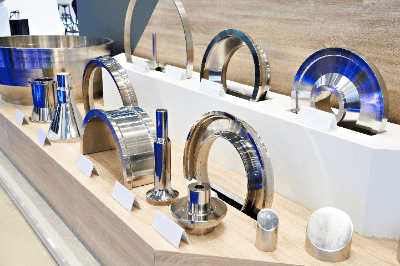What Is a Superalloy?

Superalloy is a general term for alloys that have been developed to maintain the required properties even at temperatures of 800°C or higher, and are metals with excellent heat resistance, high hardness, and oxidation resistance.
Since its first development, development has continued, and many alloys with excellent heat resistance have been introduced.
Currently, there are three main types of alloys under development: nickel-based Ni-base alloys, cobalt-based Co-base alloys, and iron-based Fe-base alloys.
Furthermore, development of superalloy is not limited to the three base alloys, but also includes the addition of substances such as molybdenum, tungsten, and titanium.
Uses of Superalloys
Iron-based Fe-based alloys are well known for their use in jet and rocket engines because of their superior mechanical strength among superalloys.
Nickel-based superalloys are also used in turbochargers and micro gas turbines because of their superior mechanical strength, similar to Fe-based alloys.
In addition, cobalt-based co-base alloys have slightly lower mechanical strength and are used in gas turbines for static blades and in the roadbeds of high-temperature furnaces, etc. Superalloys are also used and studied in various fields.
Characteristics of Superalloys
Before the development of superalloy, stainless steel and heat-resistant steel were known as metals with excellent heat resistance, but the temperature at which they could maintain their properties was said to be about 500℃.
Originally, metals with excellent heat resistance were assumed to have a high melting point. Among the major metals, tungsten has the highest melting point at 3422°C, followed by molybdenum, niobium, titanium, iron, cobalt, and nickel.
Titanium, which is at the top of the list, has excellent corrosion resistance at room temperature, but it is extremely susceptible to oxidation at high temperatures, making it impossible to maintain its properties.
Superalloys are said to have been developed by changing the composition of nickel, iron, and cobalt, which have relatively high melting points and are compatible with additives, as a base.
Superalloys are being developed to achieve both corrosion resistance at high temperatures and oxidation resistance and strength, with the aim of further improving their properties by changing the amounts of various substances in the mixture.